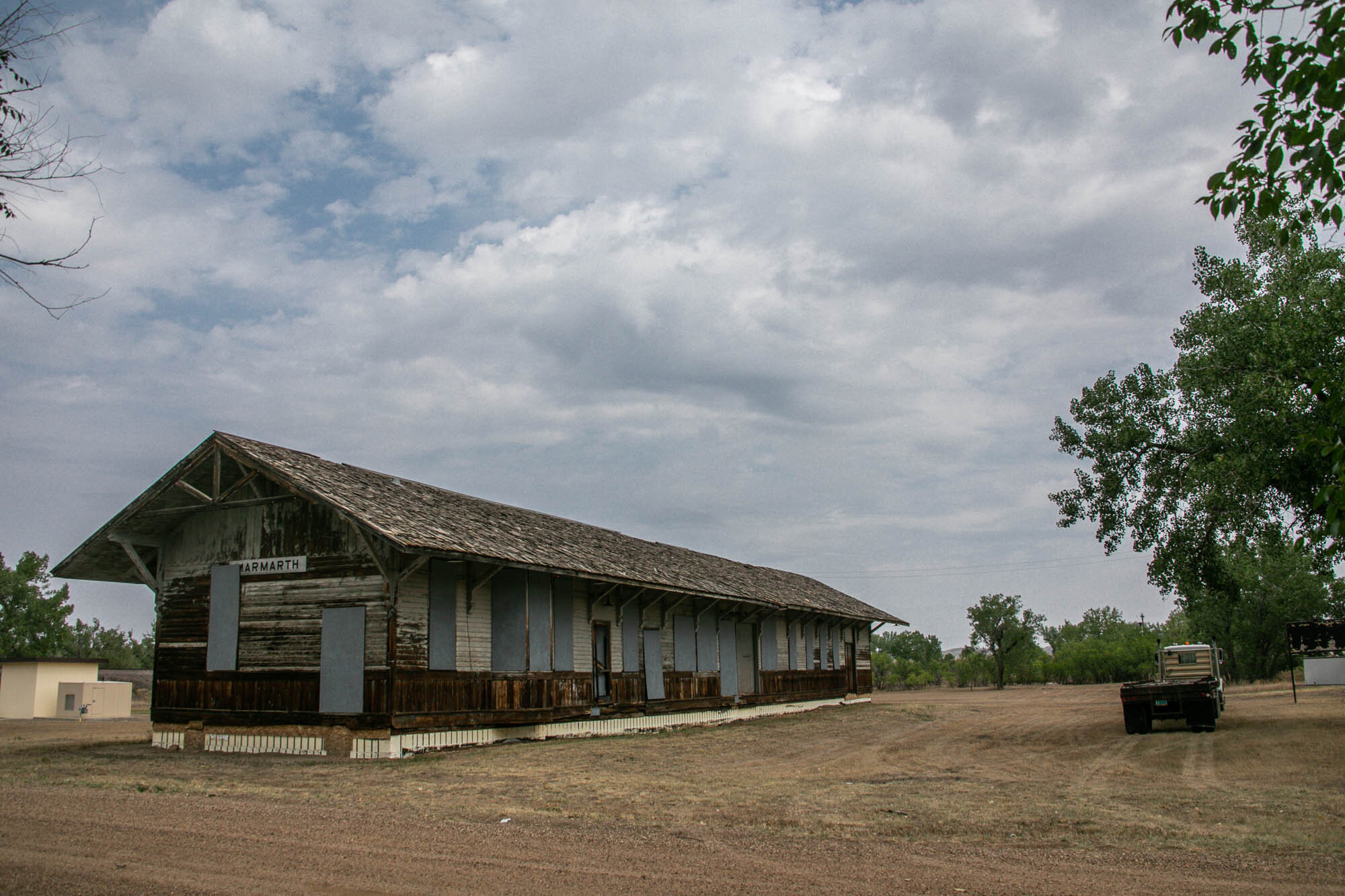By the time I had walked from the Billings airport terminal to my rental car in the lot, I was soaked. In one of the driest years the West has ever seen, I chose two days of monsoon weather for my next trip along the old route of the CMSP&P. In Roundup, where I started following US 12, I saw the old CMSP&P station, now serving as office for the Fergus Electric Co-Op and had enough rain to keep me hiding in my car. On to Ingomar, the first photo bonanza of the trip. As in other abandoned and photogenic towns I visited, one must drive a few miles off the main highway to find the best history. Besides the ancient Jersey Lilly Saloon (which is for sale) the only building in decent repair was the well-maintained original RR station. Out in the field nearby was a large black coal tender with the Milwaukee Road insignia. (continued below)
In Miles City the old rail line is a BNSF line with a few long trains every day. The CMSP&P station is being used by the city schools, for storage and shop class. I also found the Northern Pacific station, fancier than the CMSP&P’s, but on the verge of disintegrating demise.
The next day, the weather improved and allowed me to spend more time with my camera outside of the car. Seven miles north on a gravel road took me to Ismay, which at first looked like a ghost town. But I found a friendly rancher working in the grain elevator along the active BNSF tracks, who explained that 70 years ago 150 residents lived here, before the main highway was re-routed to the south. Today’s population is under twenty and the only building remaining from Ismay’s founding days is a sturdy brick jail, built for $675 in 1910. I’ve seen numerous towns along the Milwaukee Road in the West that were founded around 1909 during the construction of the route to Seattle. When the railroad went out of business in the 1980’s, quite a few towns disappeared along with the CMSP&P.
Mobridge, SD is where the railroad crosses the Missouri River, over an impressive span still in use. Overlooking the Missouri is the monument to Sitting Bull, the Lakota chief, whose tribe controlled half of South Dakota before the white man arrived.
Further east on US 12 was the town of Java, one of the few places where I found the old CMSP&P rails abandoned, but not taken away for scrap. In Bowdle, I met a 22-year-old volunteer fireman, polishing the fire truck because it would be part of his wedding the next day. On to bustling Aberdeen, where the CMSP&P station is in excellent condition, used as offices by the BNSF.
I followed a different route back to Billings, which included Little Bighorn Battlefield Nat. Monument, where Lakota and Cheyenne warriors, led by Crazy Horse, defeated Custer’s 7th Cavalry Regiment. The Little Bighorn monument is a sobering memorial to the last major victory by native Americans fighting the western tide of settlement,. The monument is surrounded by the Crow Indian Reservation today. I was fortunate to be there during the annual Crow Fair, the second largest powwow in the US, attracting over 20,000 native Americans.
The Little Bighorn battle took place in 1876 only seven years after the Golden Spike was driven into a tie by Leland Stanford, marking the completion of the first transcontinental railroad. The new railroad drove the final phase of the conquest of the West and the end of native American life on the open prairies. The Union Pacific, Northern Pacific, Great Northern and the Milwaukee Road brought settlers, ranchers and civilization west and changed North America forever.
Links to previous CMSP&P chapters:






















